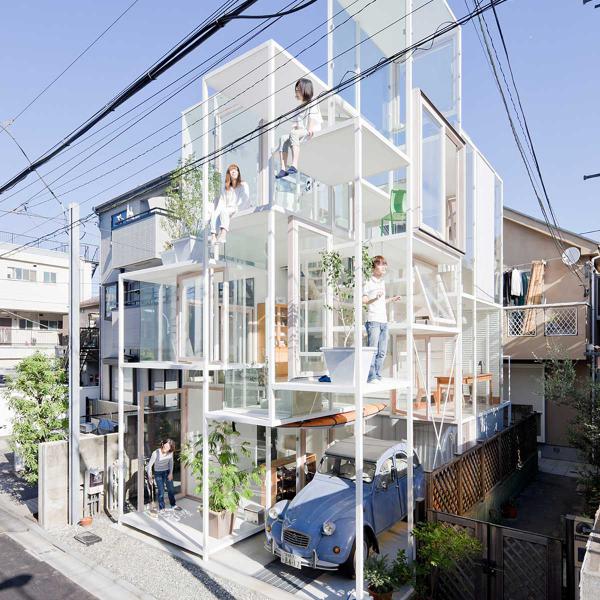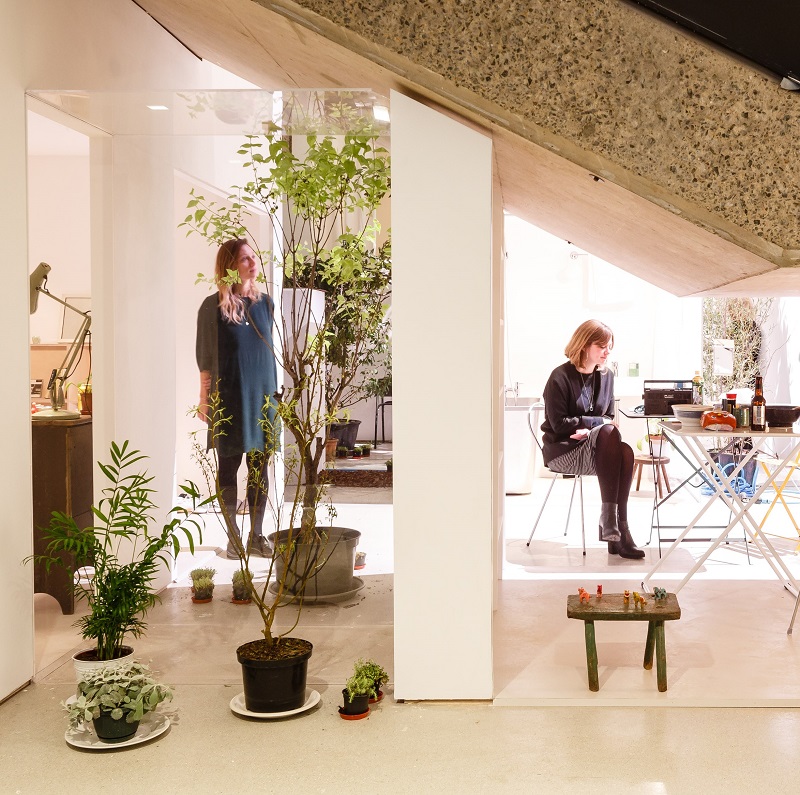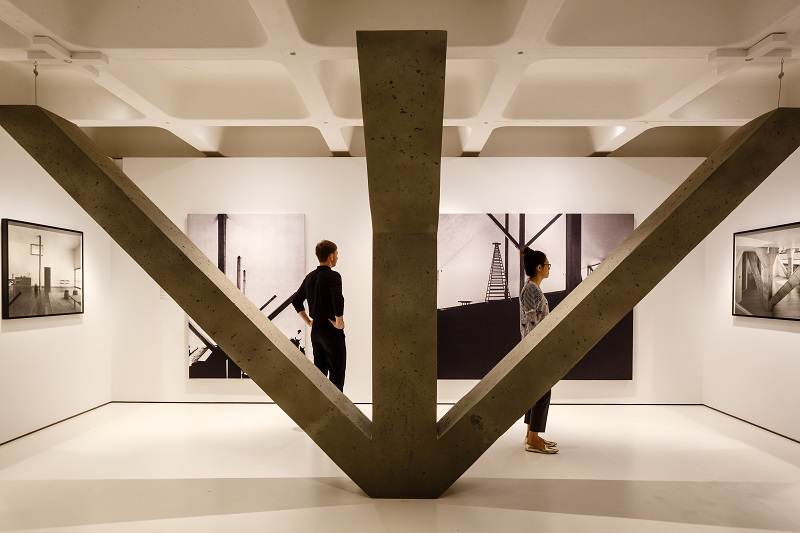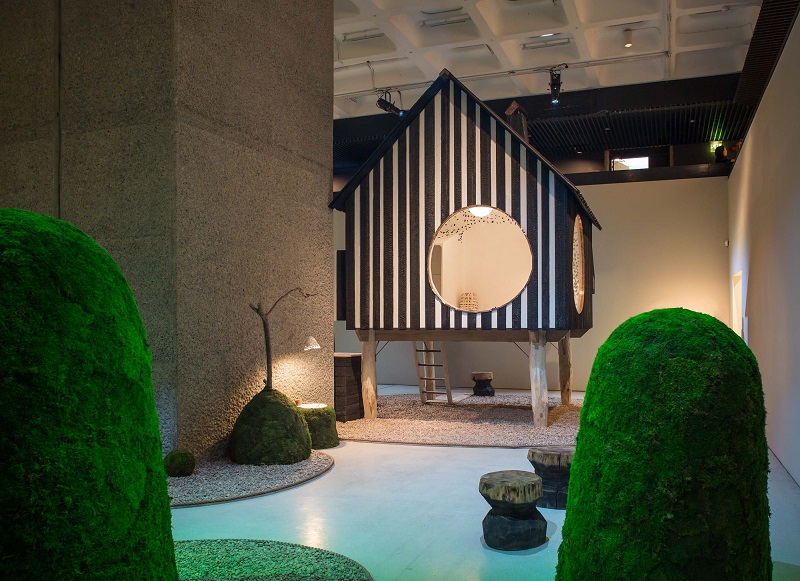Main author
Michael BrooksThe Japanese House: Architecture and Life after 1945
In April 2017, Designing Buildings Wiki attended a major first-of-its-kind UK exhibition at London’s Barbican Centre. ‘The Japanese House: Architecture and Life after 1945’ focuses on Japanese domestic architecture since the country was left devastated by the Second World War.
The exhibition features more than 40 architects, from the celebrated Tadao Ando and Kenzo Tange, to those little-known outside their home country such as Kazuo Shinohara and Osamu Ishiyama. Together they are responsible for a glut of groundbreaking architectural projects that quite literally re-built Japan from the ruins and provided innovative and experimental solutions to urbanisation, traditional building and densification.
Through a range of media – video, aural, models and prints – the exhibition takes the visitor through the different phases and trends that developed out of the need for rapid solutions to critical problems (approximately 4.2 million homes were destroyed by the end of the war). Japanese architects, in particular the developing movement of Metabolists, agreed that the solution lay in standardised, modular designs using prefabricated elements.
It is interesting to note that while Europe, at the same time, focused on large housing complexes, Japan concentrated on the single family home and how it could adapt to the realities of the 20th century. It is hard not to draw parallels with the UK’s contemporary housing shortage, and the need to re-imagine domestic architecture to meet the pressing realities of the 21st century.
The centre-piece of the exhibition is an ambitious 1:1 scale recreation of the Moriyama House by the Pritzker Prize-winning architect Ryue Nishizawa. It is considered one of the most important designs of the 21st century, representing as it does a radical decomposition of the conventional house.
10 individual units are arranged around the sturdy structural frame of the Barbican as though intended as part of its original design.
There is also an ambitious new commission by architect/historian Terunobu Fujimori who has designed a hand-charred timber teahouse with a playful garden through which visitors can stroll. This arrangement provides an intriguing accompaniment to the minimalism of the Moriyama House, offering a glimpse of the range of traditional Japanese architecture.
This is a well-presented and thoroughly engaging exhibition that all those with an interest in architecture and design, or simply with a curiosity for Japan, would do well to experience.
The Japanese House runs until 25th June 2017.
Images courtesy Barbican Centre.
[edit] Find out more
[edit] Related articles on Designing Buildings Wiki
Featured articles and news
Architects, architecture, buildings, and inspiration in film
The close ties between makers and the movies, with our long list of suggested viewing.
SELECT three-point plan for action issued to MSPs
Call for Scottish regulation, green skills and recognition of electrotechnical industry as part of a manifesto for Scottish Parliamentary elections.
UCEM becomes the University of the Built Environment
Major milestone in its 106-year history, follows recent merger with London School of Architecture (LSE).
Professional practical experience for Architects in training
The long process to transform the nature of education and professional practical experience in the Architecture profession following recent reports.
A people-first approach to retrofit
Moving away from the destructive paradigm of fabric-first.
International Electrician Day, 10 June 2025
Celebrating the role of electrical engineers from André-Marie Amperè, today and for the future.
New guide for clients launched at Houses of Parliament
'There has never been a more important time for clients to step up and ...ask the right questions'
The impact of recycled slate tiles
Innovation across the decades.
EPC changes for existing buildings
Changes and their context as the new RdSAP methodology comes into use from 15 June.
Skills England publishes Sector skills needs assessments
Priority areas relating to the built environment highlighted and described in brief.
BSRIA HVAC Market Watch - May 2025 Edition
Heat Pump Market Outlook: Policy, Performance & Refrigerant Trends for 2025–2028.
Committing to EDI in construction with CIOB
Built Environment professional bodies deepen commitment to EDI with two new signatories: CIAT and CICES.
Government Grenfell progress report at a glance
Line by line recomendation overview, with links to more details.
An engaging and lively review of his professional life.
Sustainable heating for listed buildings
A problem that needs to be approached intelligently.
50th Golden anniversary ECA Edmundson apprentice award
Deadline for entries has been extended to Friday 27 June, so don't miss out!
CIAT at the London Festival of Architecture
Designing for Everyone: Breaking Barriers in Inclusive Architecture.
Mixed reactions to apprenticeship and skills reform 2025
A 'welcome shift' for some and a 'backwards step' for others.





























